June 17, 2025 | 02:52 GMT +7
June 17, 2025 | 02:52 GMT +7
Hotline: 0913.378.918
June 17, 2025 | 02:52 GMT +7
Hotline: 0913.378.918
Grand, inclusive objectives
The Ministry of Agriculture and Rural Development has coordinated with other ministries, sectors and received opinions from localities, scientists and international organizations to complete the dossier for the The Water Security and Dams, Reservoirs Safety Project for the period of 2021 - 2030, with a vision to 2045, submitted to the Government for approval (in Report No. 5234/TTr-BNN-TCTL dated August 17th, 2021).
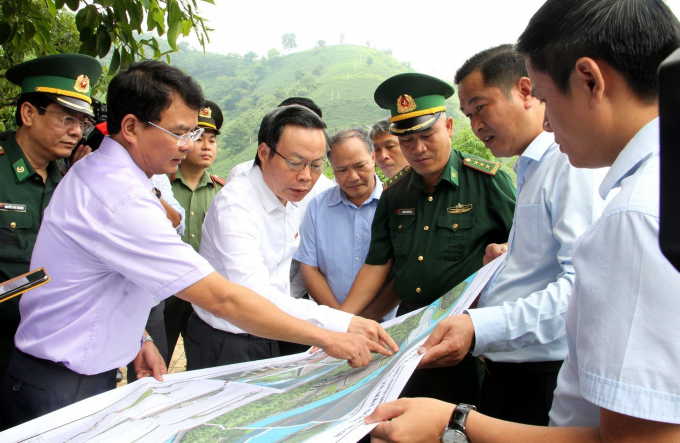
Former Vice Chairman of the National Assembly Phung Quoc Hien and a delegation surveying water sources in A Mu Sung commune, Bat Xat district, Lao Cai province. Photo: TL.
Accordingly, the overall goal of the Project by 2030 is to ensure a balance of water sources for daily life, industry, services and important economic sectors. Invest in building large water reservoirs and inter-regional water transport systems; complete repair and upgrade of damaged, degraded reservoirs unsuitable for flood prevention and control.
In particular, the Project sets out specific targets such as providing for 100% of the urban population, 65% of the rural population, and 100% of the densely populated islands to be supplied with standard clean water; 30% of the crop area to be implemented with advanced and water-saving farming methods.
Simultaneously, 50% of the total urban domestic wastewater is to be collected and treated to meet environmental technical standards, of which at least 20% of wastewater after treatment is reused; 100% of establishments causing serious water pollution are handled... 100% of urban areas will not face frequent flooding in the rainy season.
To accomplish this, it is necessary to have a solution to maintain the forest cover rate within 42 - 43%, the natural forest area from 10.3 million ha to 10.5 million ha, 20% of which will have improved aquatic resources creation quality, mitigation of water-related disasters, proactive and effective responses to climate change.
Build a system of indicators to monitor and assess water security using modern and advanced technology and techniques in accordance with common international standards. Gradually raise the national water security index...
Capital source for implementation by 2030 is at least VND 610,000 billion
The available fund for the project is expected to be at least VND 610,000 billion by 2030, of which VND 310,000 billion is from the central budget, VND 250,000 billion from the local budget, and VND 50,000 billion from the third sector and other legal sources.
The Ministry of Agriculture and Rural Development clarified: "The funding proposed in the Project is aggregated from ministries, branches and localities in large quantities, making it difficult to meet in the short term". Therefore, the Government proposes to the National Assembly to approve a major policy when formulating a medium-term public investment plan, as a basis for the Government to balance and submit to the National Assembly according to the Law on Public Investment and the Law on State Budget.
In the immediate future, the Ministry of Agriculture and Rural Development recommends that the Government allocate resources in the medium-term plan for the period of 2021 - 2025 in accordance with the requirements, goals and solutions of the Project, and submit it to the National Assembly Standing Committee for approval.
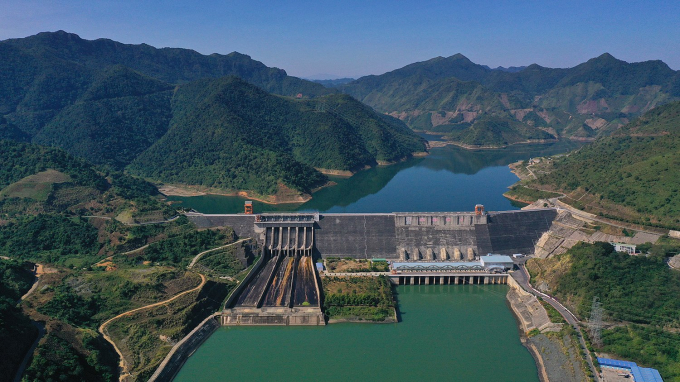
Bird-eye view of Son La hydroelectric lake. Photo: TL.
According to the Ministry of Agriculture and Rural Development, in order to achieve these goals, it is necessary to first perfect institutions and policies related to water in the direction of demand management, economization, socialization, digital transformation; mobilize resources, facilitate and motivate organizations, individuals to participate in the investment, management and operation of water infrastructure; exploiting and providing water services; encourage economical use of water... At the same time, implement preferential policies and attract high-quality human resources; review and build a system of qualified training institutions.
Regarding resource mobilization for project implementation, the state budget continues to prioritize investment in projects facing difficulty with mobilizing social resources, construction of large and particularly important works, works in ethnic minority, mountainous areas, islands, areas with challenging socio-economic conditions, water-scarce areas, areas heavily affected by climate change.
Public investment capital will act as a guide, a primer to attract and spread social capital, support for less attractive but effective projects in disadvantaged areas to share risks with investors. In addition, the State will attract ODA capital to invest in water resevoir and social security works.
Establishing a national water source network
In order to proactively supply, irrigate, and drain water, the Project has introduced groups of structural and non-structural solutions.
Accordingly, for the group of non-structural solutions, it is necessary to reorganize the production sectors, especially for agricultural production to ensure suitability with the water source conditions in each locality; consolidate organizations managing and exploiting irrigation works.
Accelerate the transformation of agricultural production, restructure the seasons, acreage, plant varieties and livestock according to the value chain orientation of key product groups, suitable with the water source conditions of each region, localities, river basins, irrigation systems, research and develop plant and animal varieties that use less water and are salt tolerant...
Regulate and distribute water from irrigation and hydroelectric projects. When drought or water shortage occurs, priority should be given to water supply for daily life, livestock, and perennial crops of high economic value; apply modern technology in management and operation.
As for the structural solutions, the Project identifies the need to build multi-purpose water reservoirs, salt-fresh water control works in large estuaries, water transport works, connection and linkage of water sources, self-contained irrigation system, ensuring the proactive storing of fresh water, regulating and distributing water sources inter-provincially, inter-regionally and nationwide, forming a national water source network, actively regulating and allocate water resources for key economic regions, central coastal areas, and Mekong River Delta. Additionally, invest in the construction and completion of clean water supply works in rural and urban areas, giving priority to areas frequently affected by natural disasters, difficult economic areas, ethnic minority areas.
Ensuring the safety of dams and reservoirs
According to the Ministry of Agriculture and Rural Development review, the country currently has more than 7,800 dams and reservoirs with a total capacity of about 70.5 billion m3. If a dam failure occurs, it will lead to a national disaster...
Therefore, it is necessary to consolidate and strengthen the organization and decentralization of management and exploitation of dams, reservoirs for irrigation and hydropower; improve the quality of human resources and equipment, apply science and technology, modernize the management and operation of dams and reservoirs.
At the same time, it is necessary to invest in installing a specialized hydro-meteorological monitoring system, an operation monitoring system; building flood maps for downstream areas of dams, disaster response plans with emergency scenarios for dams and water reservoirs.
In particular, for the group of non-structural solutions, it is necessary to focus on completing the repair and upgrading of damaged, degraded dams and reservoirs lacking flood resistance by 2025, especially for dams and water resevoir at high risk of danger, concentrated basins with rapid flood flows... build water reservoirs in areas prone to frequent droughts, water shortages, saline intrusion, floods, waterlogging to store water, transport water for production and daily life, push salinity, cut floods to ensure safety for downstream areas.
In addition, the project also offers a series of solutions related to planning and basic investigation; ensure the quality of the water environment; prevent, combat and minimize adverse impacts caused by natural disasters and climate change; forest protection and development; building a system for monitoring and supervising water source security; science and technology; international cooperation and communication, raising awareness...
According to the Ministry of Agriculture and Rural Development, during the formulation of the Project, it was suggested that it is necessary to develop and implement the National Target Program on Water Security and Safety of Dams and Reservoirs. However, the Ministry of Agriculture and Rural Development proposed that the Government submit to the National Assembly for the development of a public investment program to implement the Project.
Translated by Nguyen Hai Long
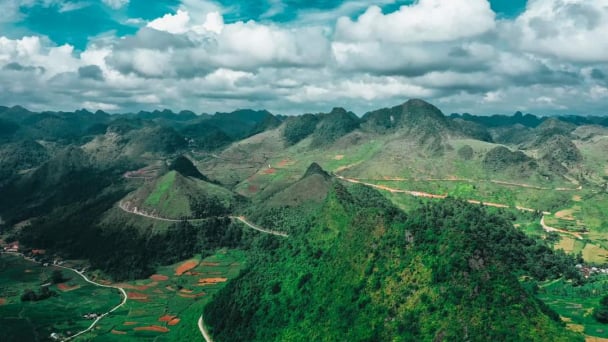
(VAN) The UNESCO Global Geopark revalidation of Non nuoc Cao Bang and the transition to a two-tier administrative model are presently undergoing a pivotal moment in Cao Bang, the northernmost province of Vietnam.
/2025/06/13/5330-2-004539_953.jpg)
(VAN) Changing policy mindset and removing investment barriers are urgent requirements to open up new development space for enterprises in the agricultural sector.

(VAN) The areas include the restoration of five million hectares of marine ecosystems.

(VAN) Dr. Le Van Nguyen, Director of the Institute of E-Commerce Management (ECM), emphasizes the potential for green development through the cultivation of fruit trees, particularly in provinces such as Son La.
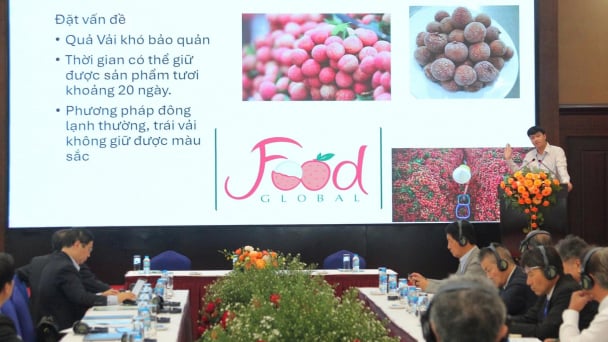
(VAN) VAAS and numerous Vietnamese enterprises have signed cooperation agreements with Japanese partners to promote agricultural technology and trade connectivity.
/2025/05/29/5625-12-214801_567.jpg)
(VAN) Provincial mergers in the Mekong Delta promise to streamline administration, expand inter-provincial raw material areas, and foster close linkages in agricultural value chains, benefiting both businesses and cooperatives.
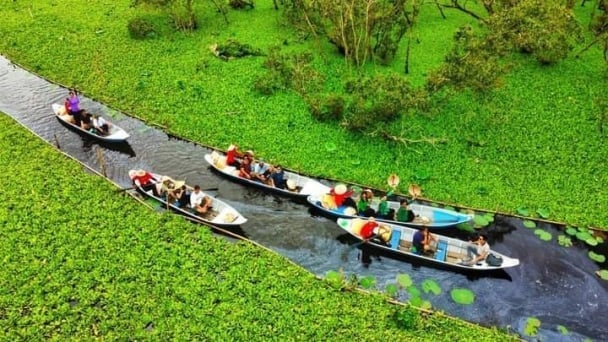
(VAN) Merging Mekong Delta provinces contributes to the expansion of agricultural raw material areas, addressing previous constraints caused by provincial boundaries. Additionally, this expansion will reduce costs and strengthen linkages between businesses, cooperatives, and farmers.